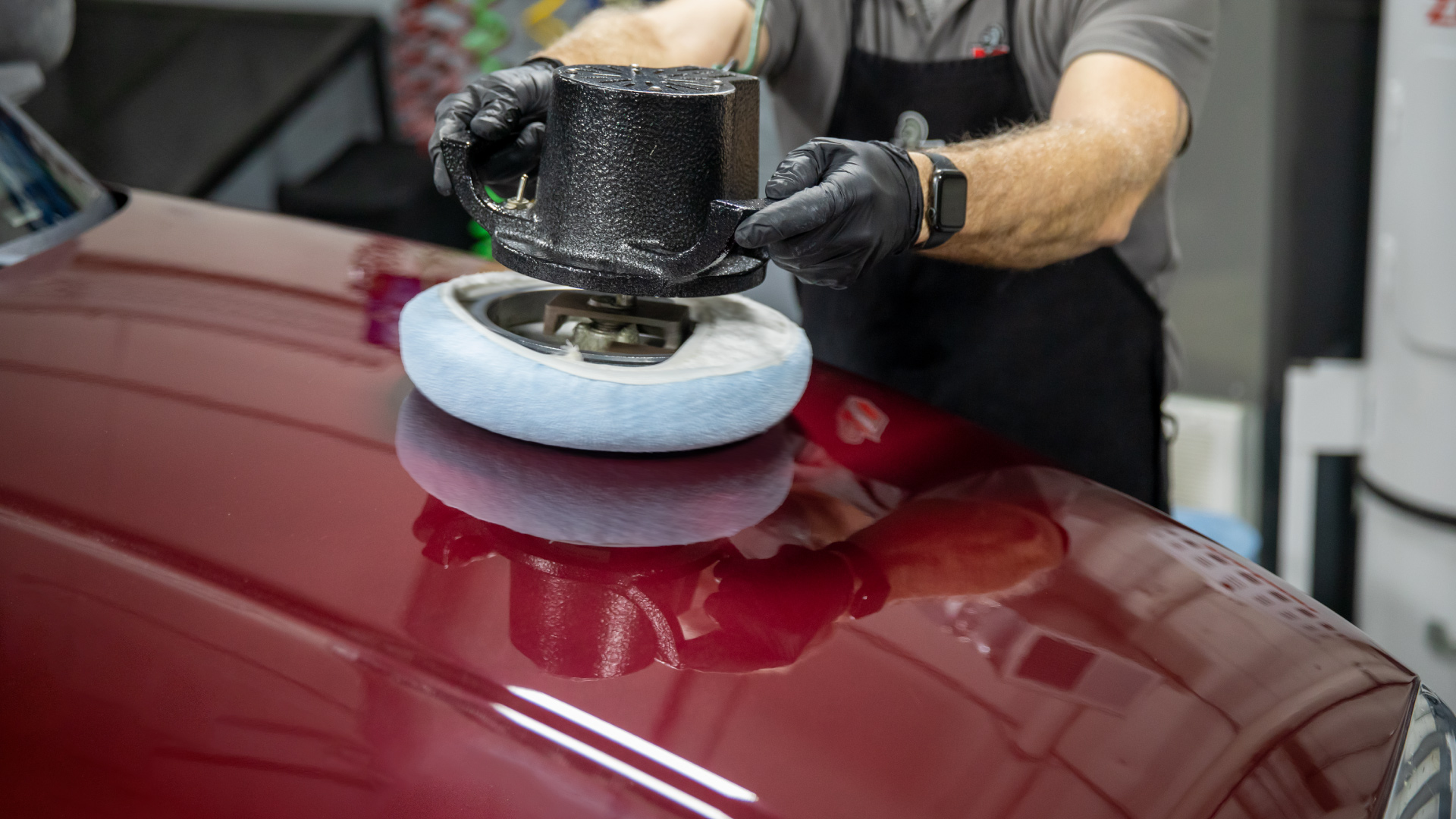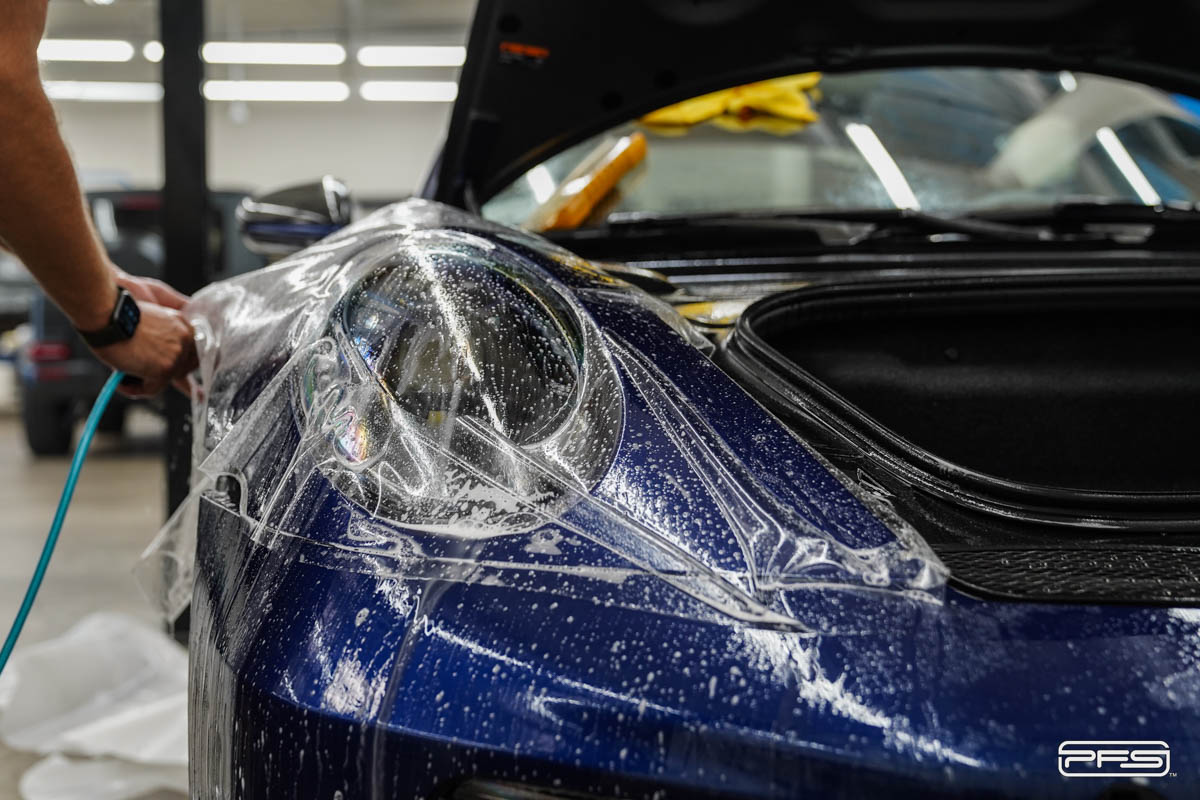Understanding the Various Kinds Of Paint Protection Available for Cars
Browsing the myriad of paint defense options for cars can be a complicated yet critical job for cars and truck owners intending to protect their investment's look and value. From the acquainted regimen of using conventional wax to innovative options like ceramic finishings and paint defense films, each approach provides unique advantages and difficulties.
Standard Wax
Typical wax remains a popular selection for car enthusiasts seeking to secure their lorry's paintwork. Esteemed for its capability to improve the aesthetic charm of auto coatings, standard auto wax commonly includes natural active ingredients, such as carnauba wax, beeswax, and numerous oils. These parts are mixed to develop an item that provides a deep, shiny shine, emphasizing the shade and depth of an automobile's paint.
When used, traditional wax develops a sacrificial layer that guards the paint from ecological contaminants like dirt, gunk, and light UV direct exposure. Although it does not bond chemically with the paint surface area, as some modern options do, the wax's safety layer works in pushing back water and maintaining a tidy exterior. This kind of protection typically needs normal reapplication to preserve its efficacy, as the life expectancy of traditional wax is usually limited to a few weeks or months, depending on environmental conditions and automobile usage.
Application of conventional wax is normally simple, entailing the application with an applicator pad and buffing to a high gloss. Regardless of innovations in paint defense innovation, standard wax stays a trusted alternative for those valuing classic approaches and visual appeals.
Paint Sealants
In contrast to traditional wax, paint sealants offer a longer-lasting solution for safeguarding an automobile's paintwork. Typically formulated from synthetic substances, repaint sealants are developed to offer long lasting protection versus ecological contaminants, UV rays, and small abrasions. Unlike wax, which might require constant reapplication, a top quality paint sealer can last anywhere from 6 months to a year, relying on driving problems and upkeep regimens.
The application process for paint sealers is normally simple, needing a clean, dry surface area for optimum adhesion. Once used, sealants develop a resilient obstacle that enhances the automobile's gloss and depth of shade, matching the visual appeal supplied by wax. Importantly, the artificial nature of sealers enables them to bond better with the automobile's surface, producing a much more enduring shield.
Furthermore, paint sealants are especially helpful for auto owners seeking to decrease maintenance time while making the most of defense. They offer resistance to typical concerns such as water places and chemical etching, making them a useful selection for those who often drive in rough weather or navigate city environments. Generally, paint sealants supply a reliable and reliable ways of keeping a car's look and resale worth.

Ceramic Coatings
While paint sealers give an outstanding degree of security and toughness, ceramic layers stand for a substantial innovation in auto paint conservation. Ceramic layers are fluid polymers put on an automobile's exterior to produce a chemical bond with the existing paint (paint protection). This bond forms a protective layer that considerably improves the cars and truck's resistance to ecological pollutants, such as UV rays, bird droppings, and acid rain
Among one of the most significant functions of ceramic coverings is their hydrophobic residential properties. This high quality guarantees that water, along with dirt and crud, is properly fended off from the surface, making the car less complicated to preserve and clean. Additionally, ceramic coverings use a high-gloss surface, enhancing the aesthetic allure of the lorry with a mirror-like shine.
Sturdiness is an additional essential advantage of ceramic finishes. Unlike standard waxes or sealants that might require constant reapplication, ceramic finishings can last numerous years with appropriate upkeep, using long-term defense and value. The application procedure, however, calls for precision and proficiency, usually demanding expert installment for ideal results. In recap, ceramic layers supply superior security, ease of maintenance, and boosted visual charm, making them a recommended option for auto enthusiasts looking for a high level of surface area defense.

Paint Security Film
Lots of car proprietors transform to Repaint Defense Movie (PPF) as a reliable remedy for maintaining their automobile's outside. This clear polycarbonate urethane movie is carefully put on the painted surfaces of a vehicle, supplying a durable guard versus numerous ecological hazards. PPF masters securing versus rock chips, minor abrasions, and the damaging impacts of UV radiation, hence maintaining the car's pristine look over time.
One of the key advantages of PPF is its self-healing residential properties. Small scrapes and swirl marks on the movie can go away with direct exposure to warmth, such as sunshine or cozy water, making sure that the protective layer remains inconspicuous while preserving its efficiency. This technology not just boosts the visual charm of the vehicle but likewise adds to its resale worth by reducing wear and tear.
PPF is additionally highly personalized, enabling check here vehicle proprietors to choose details areas for defense, such as the hood, fenders, mirrors, or the entire lorry. Expert installment is recommended to make certain a seamless application and to avoid bubbles or imbalance (paint protection). In General, Paint Defense Film is an outstanding investment for vehicle enthusiasts, supplying lasting protection and satisfaction
Contrasting Paint Security Options
Automobile owners regularly encounter the decision of choosing one of the most ideal paint defense choice for their lorries. The selection often entails examining a number of preferred techniques, consisting of paint defense film (PPF), ceramic finishings, and standard wax. Each alternative offers distinct advantages and factors to consider, demanding a mindful assessment based on individual requirements and assumptions.
Paint protection movie, commonly concerned as the most robust solution, gives a physical obstacle that shields the automobile's surface area from chips, scrapes, and ecological impurities. In contrast, ceramic finishings use a fluid polymer that chemically bonds with the car's paint, supplying a glossy finish and lasting security versus UV rays, chemicals, and minor scrapes (paint protection).
Conventional wax, find out a classic choice, provides a much more economical yet much less durable type of defense. It provides a short-term guard against pollutants and enhances the automobile's shine. It demands frequent reapplication to keep its protective qualities.
Ultimately, the decision depends upon elements such as spending plan, desired long life, and the degree of security looked for, assisting cars and truck owners to one of the most proper option.
Final Thought
The varied click for source variety of paint security choices available for vehicles serves different protective demands and spending plans, each offering unique benefits. Repaint sealers deliver longer-lasting synthetic security. Repaint defense film offers a robust barrier versus physical damages.
Browsing the myriad of paint security choices for automobiles can be a daunting yet important task for car proprietors aiming to protect their financial investment's look and worth.While paint sealers provide an outstanding degree of security and resilience, ceramic coatings represent a significant development in automobile paint preservation.Lots of car owners transform to Repaint Defense Film (PPF) as an efficient option for protecting their vehicle's outside. In General, Paint Defense Film is an excellent financial investment for vehicle fanatics, using long-lasting security and tranquility of mind.
Cars and truck owners often face the decision of picking the most appropriate paint defense choice for their vehicles.
Comments on “Leading Misconceptions Regarding Paint Protection You Required to Know”